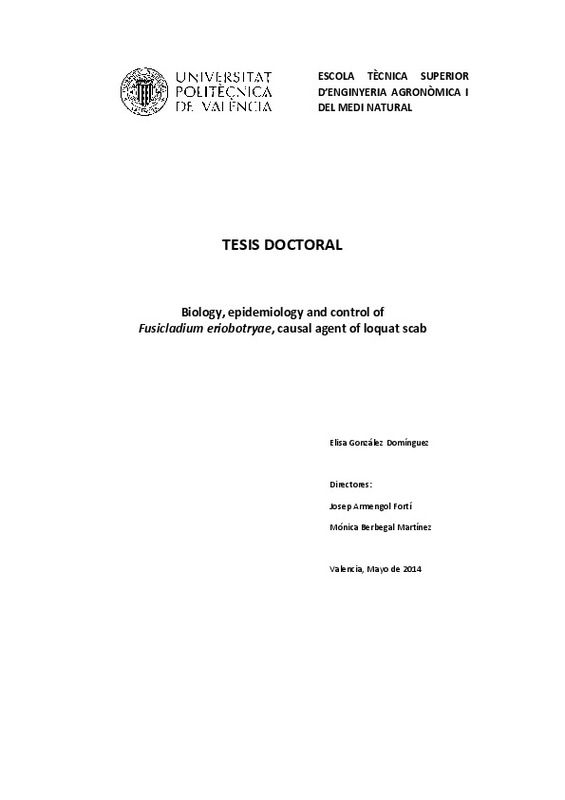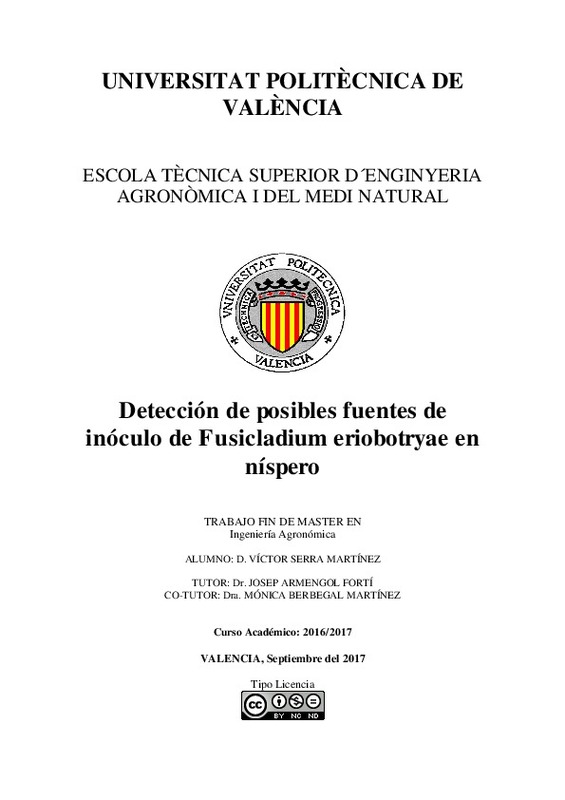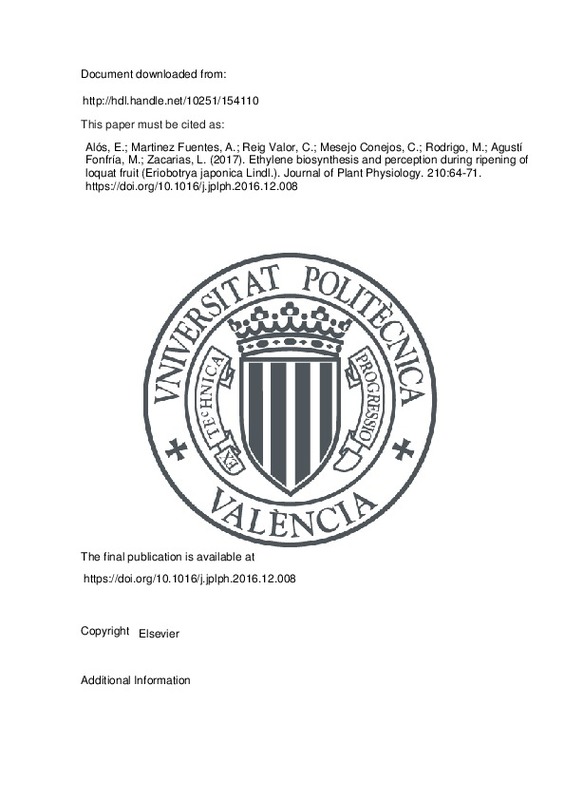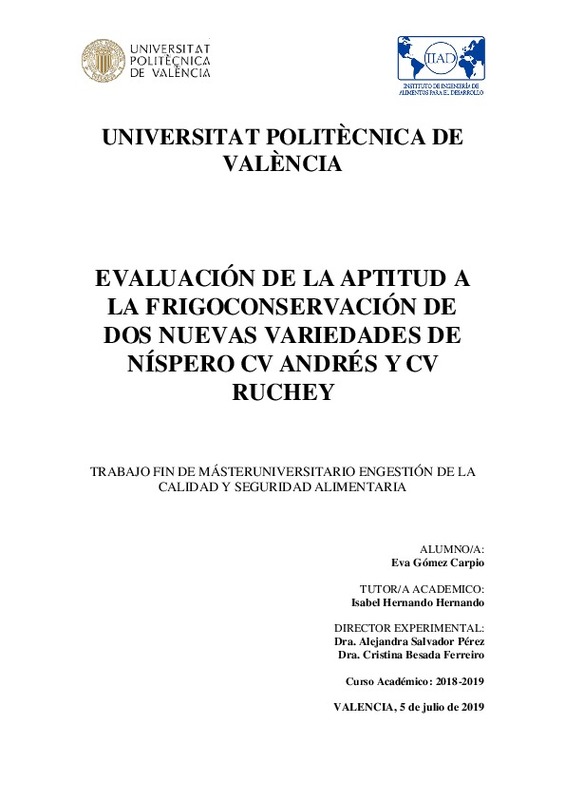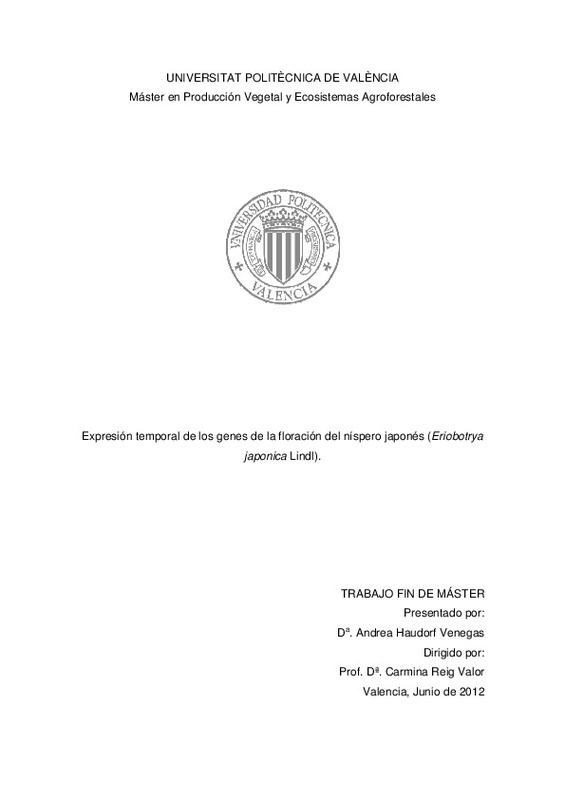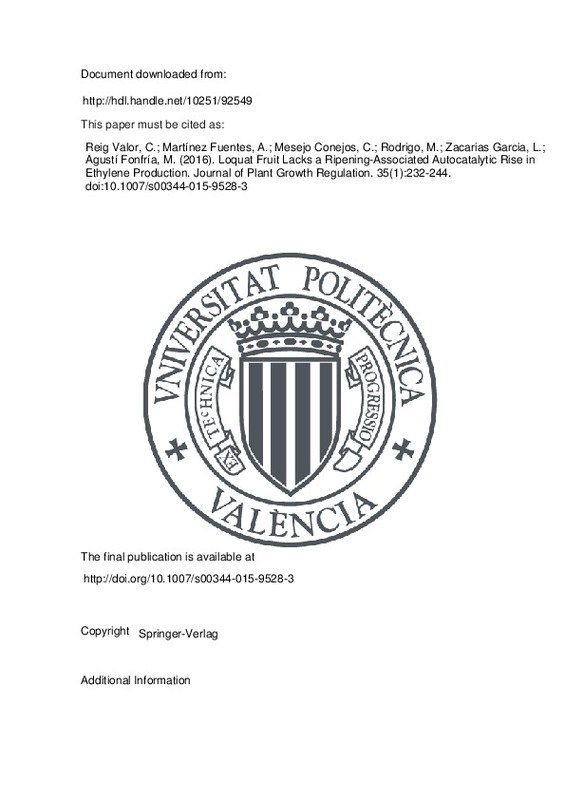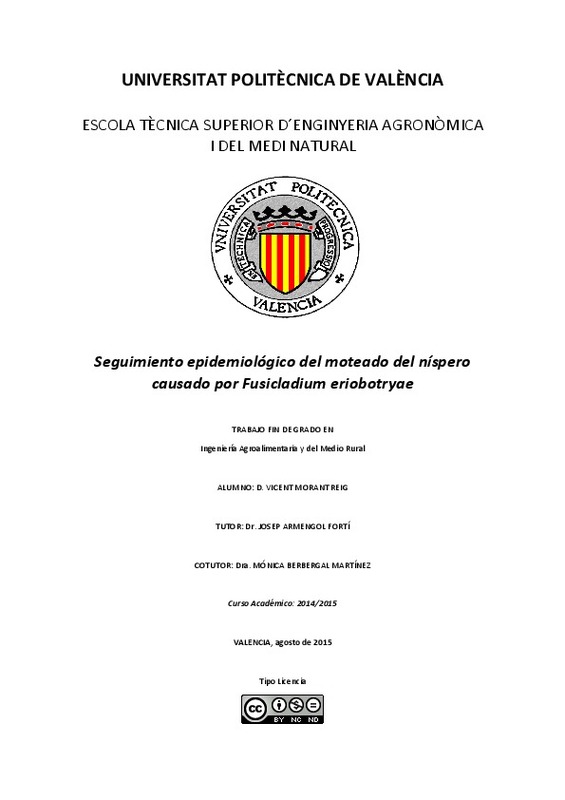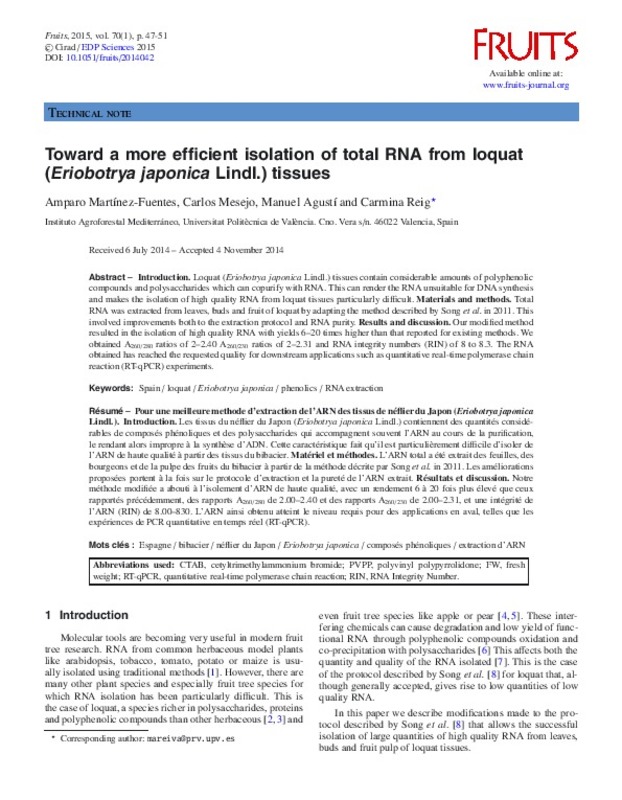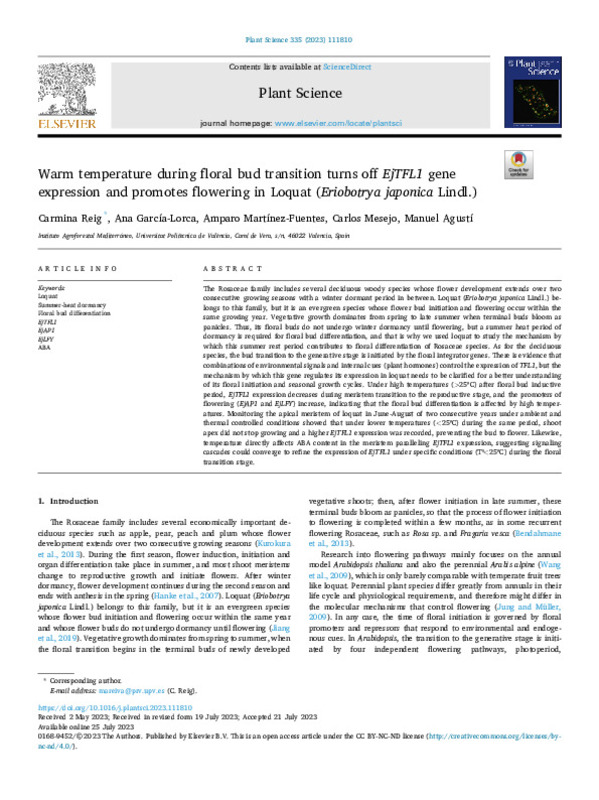

Listar por palabra clave "Loquat"
RiuNet: Repositorio Institucional de la Universidad Politécnica de Valencia
- RiuNet repositorio UPV
- :
- Listar por palabra clave
JavaScript is disabled for your browser. Some features of this site may not work without it.
Buscar en RiuNet
Listar
Mi cuenta
Ayuda RiuNet
Admin. UPV
Listar por palabra clave "Loquat"
Mostrando ítems 1-17 de 17
-
González Domínguez, Elisa (Universitat Politècnica de València, 2014-07-11)El moteado del níspero, causado por el hongo Fusicladium eriobotryae es la principal enfermedad que afecta al cultivo del níspero, produciendo pérdidas importantes en la cosecha en los años con condiciones climáticas ...
-
Serra Martínez, Víctor (Universitat Politècnica de València, 2017-10-05)[ES] El moteado causado por Fusicladium eriobotryae es la principal enfermedad que afecta al cultivo del níspero. Este hongo, causa manchas en el fruto depreciándolo para su comercialización, pudiendo alcanzar mermas ...
-
Chinchilla Albundio, Pablo (Universitat Politècnica de València, 2016-03-29)[ES] El níspero japonés (Eriobotrya japonica (Thunb.) Lindl.) es un frutal subtropical perteneciente a la familia Rosaceae, de hoja perenne que florece en otoño y cuyos frutos se desarrollan durante el invierno. Éstos se ...
-
Alós, E.; Martinez Fuentes, Amparo; Reig Valor, Carmina; Mesejo Conejos, Carlos; Rodrigo, M.J.; Agustí Fonfría, Manuel; ZACARIAS, L. (Elsevier, 2017-03)[EN] In order to gain insights into the controversial ripening behavior of loquat fruits, in the present study we have analyzed the expression of three genes related to ethylene biosynthesis (ACS1, ACO1 and ACO2), two ...
-
Gómez Carpio, Eva (Universitat Politècnica de València, 2019-11-12)[ES] Con el fin de introducir nuevas variedades que permitan ampliar la gama varietal del níspero en el área mediterránea de producción, el IVIA en colaboración con la D.O. Nísperos Callosa d’En Sarrià cuenta con un ...
-
Haudorf Venegas, Andrea Soledad (Universitat Politècnica de València, 2013-02-27)[ES] Los procesos de inducción y diferenciación floral han sido ampliamente estudiados, bajo un punto de vista molecular, en plantas herbáceas pero no en especies leñosas en las que su ciclo vegetativo, largo y anual, ...
-
Montealegre, J.R.; Riquelme, D.; Ramírez, M.; León Santana, Maela; Abad Campos, Paloma; Pérez, L. M. (Scientific Societies, 2016)
-
Reig Valor, Carmina; Farina, Vitorio; Volpe, Giorgio; Mesejo Conejos, Carlos; Martínez Fuentes, Amparo; Barone, Francesca; Calabrese, Francesco; Agustí Fonfría, Manuel (Elsevier, 2011)The application of gibberellic acid (GA 3) to the whole loquat tree from mid-May to early June and from early August to the onset of flowering, significantly reduced the number of premature flowering shoots per current ...
-
Alós, Enriqueta; Martinez Fuentes, Amparo; Reig Valor, Carmina; Mesejo Conejos, Carlos; Zacarias, L.; Agustí Fonfría, Manuel; Rodrigo-Esteve, Mª Jesús (Elsevier, 2019-03)[EN] In loquat (Eriobotrya japonica Lindl cv. Algerie) fruit, despite the non-climacteric ripening behaviour, evidence suggest that ethylene may participate in the regulation of several ripening- and postharvest-related ...
-
Reig Valor, Carmina; Martínez Fuentes, Amparo; Mesejo Conejos, Carlos; Rodrigo, M.J.; Zacarias Garcia, Lorenzo; Agustí Fonfría, Manuel (Springer-Verlag, 2016)[EN] Loquat is considered as a non-climacteric fruit; however, there is an evidence of a climacteric-like maturation. Therefore, it seems its ripening behavior has yet to be satisfactory classified. Because autocatalytic ...
-
Reig Valor, Carmina; Mesejo Conejos, Carlos; Martínez Fuentes, Amparo; Agustí Fonfría, Manuel (Elsevier, 2014-01-22)By applying 20 mgl(-1) of alpha-naphthaleneacetic acid (NAA) potassium salt to 'Algerie' loquat tree flowers prior to or at anthesis pollen grain germination was signficantly inhibited and pollen tube growth was halted, ...
-
Gil Muñoz, Francisco (Universitat Politècnica de València, 2016-05-26)[EN] Floral induction is the necessary process for a plant to be capable to differentiate the meristem into reproductive structures. In Arabidopsis thaliana, it has been shown that the protein encoded by FT gene is produced ...
-
Morant Reig, Vicent (Universitat Politècnica de València, 2015-10-22)[EN] Loquat scab caused by Fusicladium eriobotryae is one of the most important diseases affecting leaves and fruit in this crop. The epidemiology of this fungus has not been studied in detail, although an epidemiological ...
-
Reig Valor, Carmina; Mesejo Conejos, Carlos; Martínez Fuentes, Amparo; Agustí Fonfría, Manuel (Elsevier, 2016)[EN] In loquat, the synthetic auxin 3,5,6-trichloro-2 pyridyloxiacetic acid (3,5,6-TPA) applied at 15 mgl(-1) at the onset of the linear fruit growth stage or one month later during the active fruit growth period, advanced ...
-
Martínez Fuentes, Amparo; Mesejo Conejos, Carlos; Agustí Fonfría, Manuel; Reig Valor, Carmina (EDP Sciences, 2015-01-20)[EN] Loquat (Eriobotrya japonica Lindl.) tissues contain considerable amounts of polyphenolic compounds and polysaccharides which can copurify with RNA. This can render the RNA unsuitable for DNA synthesis and makes the ...
-
Besada, Cristina; Sanchez, G.; Gil, R.; Granell Richart, Antonio; Salvador, A. (Elsevier, 2017)[EN] In recent years, the advantageous traits of three new loquat cultivars have drawn the attention of breeders and growers. All three have spontaneously arisen from the 'Algerie' cultivar: the new 'Xirlero' cultivar is ...
-
García-Lorca, Ana; Reig Valor, Carmina; Martinez Fuentes, Amparo; Agustí Fonfría, Manuel; Mesejo Conejos, Carlos (Elsevier, 2023-10)[EN] The Rosaceae family includes several deciduous woody species whose flower development extends over two consecutive growing seasons with a winter dormant period in between. Loquat (Eriobotrya japonica Lindl.) belongs ...
Mostrando ítems 1-17 de 17

Universitat Politècnica de València. Unidad de Documentación Científica de la Biblioteca (+34) 96 387 70 85 · RiuNet@bib.upv.es


